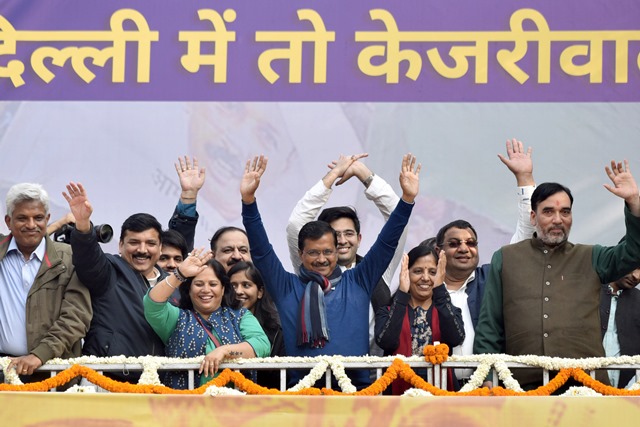If you distil down the results of the five states that held assembly elections recently, there are three conclusions that could describe them best. These three facts are what will shape the future of politics and governance in India. The same three conclusions will also impact the future of three political parties.
First, it is the unabated surge of the Bharatiya Janata Party (BJP). Winning Uttar Pradesh decisively by getting 255 of the 403 seats and, thus, retaining India’s most populous state does two things. It underlines how strong the party is in the northern belt, which in turn could be a pointer to its fortunes when parliamentary elections are held in 2024. It also silences critics who thought that the stock of UP’s hardliner chief minister, Yogi Adityanath, was falling. Already speculation has begun on whether Adityanath, 49, could succeed Narendra Modi, 71, as Prime Minister in the coming years.
There was a time before 2014 that many people ruled out that Modi (whose tenure as chief minister of Gujarat was controversial) could become India’s Prime Minister. As it happened, the doubters were put paid and Modi’s popularity continues to soar. Could Adityanath be waiting in the wings to succeed him? In Indian politics, as they say, anything can happen.
The second conclusion is the spectacular surge of the Aam Aadmi Party (AAP). There is possibly no precedent to what the party, led by Delhi’s chief minister Arvind Kejriwal, has pulled off by winning Punjab. No small regional party such as AAP has done that before. AAP won 92 of the 177 seats in Punjab, thereby reducing the traditional contenders — Shiromani Akali Dal, BJP, and Congress — to mere also rans. This has many ramifications.
ALSO READ: Cong Leadership Will Never Learn: Capt
It establishes that small regional parties, if they play their strategies well, can expand to other regions outside their strongholds and can prove to be formidable opponents to bigger traditional parties in their own bastion. AAP’s victory in Punjab does just that but it also catapults the party and its leader Kejriwal to the central stage. AAP will now be a force to contend with and we ought not to be surprised if prominent leaders from parties such as the Congress leave to join the AAP.
The third and least surprising conclusion is the complete rout of the Congress party, a political organisation that once reigned supreme in the country. Indeed, looking at the party’s current state, it is difficult to believe that it had ever been so strong, powerful, and at the top of India’s political pack. In Uttar Pradesh, the Congress won just two seats of the 403; in Punjab it managed 18; in Goa 11 (the BJP won 20) of the 40; in Uttarakhand 19 (BJP won 47) out of 70; and in Manipur it got five (BJP won 32) of the 60 seats. The writing on the wall is clear.
The Congress, run by the Gandhi family, is facing a serious leadership crisis. This has not only meant that that the party is rudderless but it has continued to be dynastic — Rahul Gandhi, the reluctant heir to his mother and the party’s current head, Sonia Gandhi, has proved himself to be a failure several times over and yet the party’s leaders do not try to infuse new blood or revamp the way the party is run. By the time 2024 rolls in and the Lok Sabha elections are held, the Congress could get diminished even further. Its fate in the recent five-state assembly polls shows that clearly.










